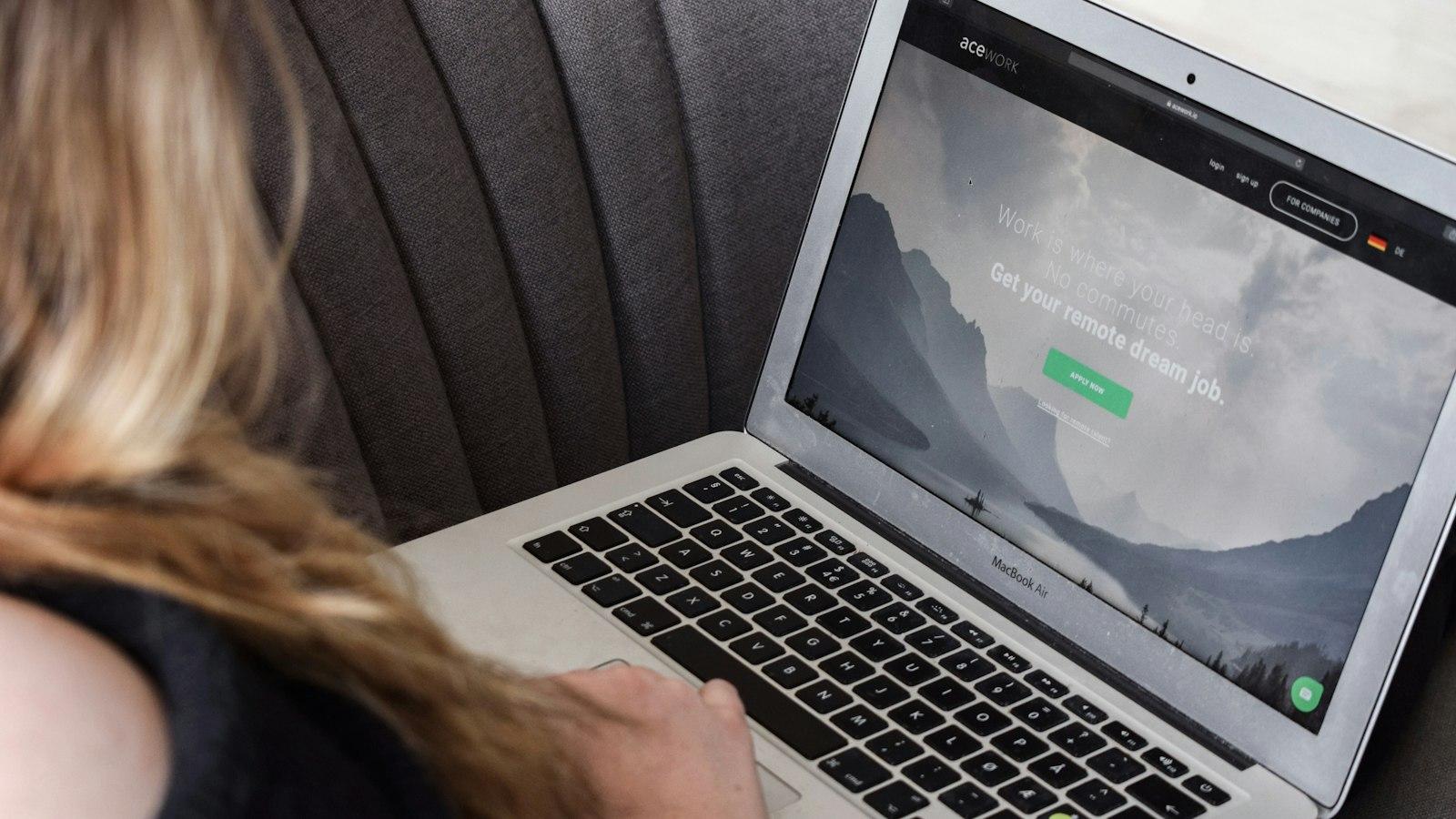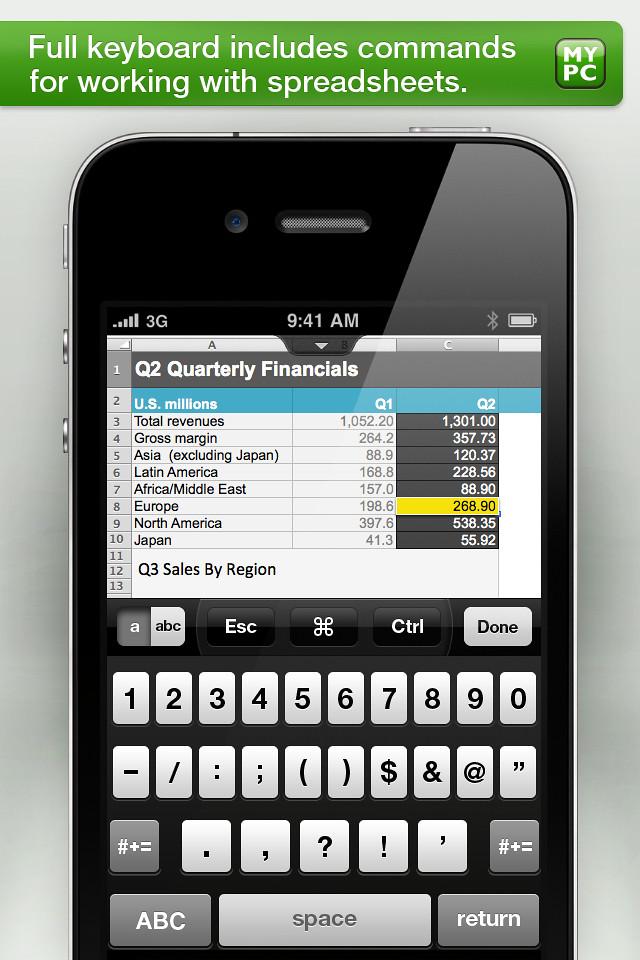
Remote Desktop Connection is a powerful tool that allows users to access their workstation or personal computer remotely, from anywhere in the world. Whether you are a professional needing access to files and data while on the go, or a tech-savvy individual wishing to assist friends and family with technical issues, understanding how to use Remote Desktop Connection is essential. In this article, we will guide you through the step-by-step process of using this useful feature, empowering you to effortlessly establish a remote connection and access your computer or assist others, irrespective of your physical location.
Introduction
Remote Desktop Connection is a powerful tool that allows you to access and control your computer remotely from another device. Whether you’re traveling, working from home, or simply need to access files on your office computer, Remote Desktop Connection is a convenient solution. In this post, we will guide you through the steps on how to use Remote Desktop Connection effectively.
Getting Started:
To get started with Remote Desktop Connection, you first need to ensure that both your host computer (the one you want to connect to remotely) and the client device (the one you’re using to connect) are running on compatible operating systems. Windows and Mac users can both utilize this feature, but the versions may vary. Once you have confirmed compatibility, you can proceed to the next steps.Enabling Remote Desktop:
On your host computer, you must enable the Remote Desktop feature. This can be done by navigating to the system settings or control panel and locating the “Remote Desktop” option. Make sure to enable it and set a secure password for authentication purposes. It is essential to choose a strong password to protect your data from unauthorized access.Configuring the Client Device:
On the client device, you need to download and install the Remote Desktop Connection software. This can usually be found on the official website of your operating system or app store. Once installed, open the application and enter the IP address or hostname of your host computer. If you’re connecting within the same network, you can use the internal IP address. If connecting from outside the network, you may need to set up port forwarding on your router.Establishing the Connection:
After configuring the client device, you can now establish the Remote Desktop Connection. Enter the username and password for the host computer, and click on the “Connect” button. The software will then attempt to establish a secure connection with your host computer. If successful, you will be able to see and control your host computer’s desktop from the client device.Using Remote Desktop Connection:
Once connected, you can perform various tasks as if you were physically sitting in front of your host computer. You can access files, run applications, and even troubleshoot any issues remotely. However, it’s important to note that Remote Desktop Connection may have limitations depending on your operating system and network settings. Some features, such as audio and video playback, may not work as expected.
In conclusion, Remote Desktop Connection is a valuable tool for accessing your computer remotely. By following the steps outlined above, you can easily set up and use Remote Desktop Connection effectively. Keep in mind the security aspects, such as enabling strong passwords and keeping your software up to date, to ensure a secure remote connection. Remote Desktop Connection can greatly enhance your productivity and flexibility, allowing you to work or access your files from anywhere in the world.

Setting up Remote Desktop Connection
allows you to access your computer remotely from any location, providing flexibility and convenience. Whether you are working from home, traveling, or need to access files on your office computer, Remote Desktop Connection is a powerful tool that can simplify your workflow. In this post, we will guide you through the process of setting up and using Remote Desktop Connection.
First, ensure that both the computer you want to connect to and the device you will be using to connect are powered on and connected to the internet. Remote Desktop Connection works on Windows operating systems, so make sure your computer is running a compatible version. Open the “System Properties” menu on your computer by right-clicking on the “This PC” icon and selecting “Properties.” Click on the ”Remote settings” link and check the box that says “Allow Remote Assistance connections to this computer.” Click “Apply” and then “OK” to save the settings.
Next, you will need to set up your device to connect to the remote computer. Download and install the Remote Desktop app from the Microsoft Store on your device. Once installed, open the app and click on the “+” icon to add a new connection. Enter the name or IP address of the remote computer you want to connect to, and click “Save.” You can also configure additional settings like display resolution, gateway server, and user account information if needed.
To establish a Remote Desktop Connection, simply click on the newly created connection in the app. You may be prompted to enter the login credentials for the remote computer. Once authenticated, you will be connected to the remote desktop and can access all the files and programs on that computer. The remote desktop session will appear in a separate window on your device, allowing you to seamlessly switch between your local and remote desktop environments.
To enhance your remote desktop experience, you can customize the connection settings. In the Remote Desktop app, access the settings menu by clicking on the gear icon. Here, you can adjust display settings such as resolution and color depth to optimize performance. You can also enable or disable features like printer redirection, clipboard sharing, and audio playback to suit your needs. Experiment with these settings to find the configuration that works best for you.
In conclusion, setting up and using Remote Desktop Connection is a valuable skill that can greatly improve your productivity and streamline your workflow. By following the steps outlined in this post, you can easily establish a remote connection to your computer and access it from anywhere. Remember to ensure that your computer’s remote settings are properly configured and that you have installed the Remote Desktop app on your device. With Remote Desktop Connection, the power of your computer is always at your fingertips, no matter where you are.

Navigating the Remote Desktop Connection interface
The Remote Desktop Connection interface provides a convenient way to access and control a computer from a remote location. Whether you’re working from home, traveling, or need to assist someone remotely, this powerful tool can make your life much easier. In this post, we will guide you through the process of using Remote Desktop Connection effectively.
To begin, you’ll need to open the Remote Desktop Connection software on your computer. This can typically be found by searching for “Remote Desktop Connection” in the Start menu or by pressing the Windows key + R and typing “mstsc” in the Run window. Once opened, you will see a simple interface with a few options for customization.
Next, you’ll want to enter the computer’s IP address or hostname into the “Computer” field. If you’re not sure what this is, you can ask the person you’re connecting to or check the computer’s settings. Additionally, you can click on the “Show Options” button to reveal more settings, such as adjusting the display resolution, enabling printer sharing, and configuring remote audio playback.
After entering the computer’s information, you can click the “Connect” button to initiate the connection. If this is your first time connecting to the computer, you may be prompted to verify its identity. Once you’ve established the connection, you will see the remote computer’s desktop displayed within a window on your own computer. You can now operate the remote computer as if you were sitting right in front of it.
While connected, it’s important to take note of a few key shortcuts that can improve your experience. To switch between the remote computer’s desktop and your own, simply press the “Ctrl + Alt + Break” keys on your keyboard. If you need to adjust the resolution of the remote desktop, hold down the “Ctrl + Alt” keys and press the ”+” or “-” keys to zoom in or out, respectively.
In summary, Remote Desktop Connection is a valuable tool for accessing and controlling a computer remotely. By following the steps outlined above, you can easily navigate the interface and establish a connection. Remember to make use of the helpful shortcuts to enhance your experience. Whether you’re collaborating with colleagues or assisting a friend, Remote Desktop Connection empowers you to stay productive and connected no matter where you are.
Optimizing your Remote Desktop experience
Remote Desktop Connection is a powerful tool that allows you to access and control another computer remotely. Whether you are working from home, collaborating with colleagues, or providing technical support, is essential for efficiency and productivity. In this post, we will explore some tips and tricks to enhance your Remote Desktop experience.
1. Use a stable internet connection
A stable internet connection is crucial for a smooth Remote Desktop experience. Make sure you are connected to a reliable and high-speed network to minimize lag and ensure fast data transfer. If possible, use a wired connection instead of Wi-Fi for a more stable connection.
2. Reduce network bandwidth
Reducing network bandwidth can significantly improve the performance of your Remote Desktop connection. To do this, you can disable unnecessary graphical effects and animations on the remote computer. You can also lower the color depth and resolution of the remote desktop to reduce the amount of data that needs to be transmitted.
3. Optimize display settings
Adjusting the display settings can also enhance your Remote Desktop experience. Consider resizing the remote desktop window to match your local monitor’s resolution for a more seamless and natural view. Additionally, you can enable the “Multimon” feature to use multiple monitors, if both your local and remote computers support it.
4. Use keyboard shortcuts
Keyboard shortcuts can greatly improve your efficiency when using Remote Desktop Connection. Familiarize yourself with popular shortcuts such as Ctrl + Alt + Del to open the task manager on the remote computer, Alt + Tab to switch between open windows, and Ctrl + Alt + Break to switch between full-screen and windowed mode.
5. Enable printer and file sharing
Enabling printer and file sharing on Remote Desktop Connection allows you to print documents from the remote computer to your local printer and transfer files between your local and remote computers easily. To enable these features, ensure that you have the necessary drivers installed on both computers and enable the appropriate settings in the Remote Desktop Connection options.
By following these tips and tricks, you can optimize your Remote Desktop experience and make your remote work or collaboration sessions more efficient and productive. Experiment with different settings and configurations to find the setup that works best for you.

Tips for troubleshooting Remote Desktop Connection issues
Having trouble with your Remote Desktop Connection? Don’t worry, we’ve got you covered with some valuable tips to help you troubleshoot those pesky issues. Whether you’re a beginner or an experienced user, these troubleshooting techniques will come in handy.
Check Your Network Connection
The first thing you should do is ensure that your computer is connected to the internet and your network connection is stable. A weak or intermittent connection can lead to frequent disconnections or slow performance. If you’re using a wireless connection, try switching to a wired one for better stability.
Verify Remote Desktop Settings
Make sure that the necessary settings are properly configured on both the host and client computers. Check if Remote Desktop is enabled on the host computer and that the client computer has permission to access it. Sometimes, a simple configuration error can cause connection problems.
Firewall and Antivirus Settings
Firewalls and antivirus software play a vital role in securing your computer, but they can sometimes interfere with Remote Desktop connections. Ensure that the necessary ports (default is TCP port 3389) are open on both the host and client computers. Additionally, add an exception to your antivirus software to allow Remote Desktop traffic.
Update Remote Desktop Client
If you’re experiencing issues with the Remote Desktop client, it could be due to outdated software. Make sure you have the latest version by checking for updates on the official Microsoft website or through the Windows Update feature. Updating your client software often resolves compatibility issues and improves overall performance.
Consult Event Logs
If none of the above troubleshooting steps have worked, it’s time to dig deeper. Windows Event Logs can provide valuable information about any errors or warnings related to Remote Desktop Connection. Take a look at the logs and search for any relevant events that might help identify the source of the issue. This information can be crucial for advanced troubleshooting or seeking support from technical experts.
Q&A
Q: What is Remote Desktop Connection?
A: Remote Desktop Connection is a built-in feature in Windows operating systems that allows you to connect to and control a remote computer or server from a different location. It essentially grants you the ability to use a computer or device to access and operate another computer as if you were physically present in front of it.
Q: How can I use Remote Desktop Connection?
A: To use Remote Desktop Connection, follow these steps:
- Ensure that the device you want to connect to remotely is connected to the internet and has Remote Desktop enabled.
- On your local computer, click on the Start menu, search for “Remote Desktop Connection,” and open the application.
- Enter the IP address or hostname of the remote computer you want to connect to.
- Click on the “Connect” button.
- Enter your username and password for the remote computer when prompted.
- Once connected, you will gain full control of the remote computer, and you can use it as if you were sitting in front of it.
Q: Are there any prerequisites to using Remote Desktop Connection?
A: Yes, there are a few prerequisites to using Remote Desktop Connection. Firstly, the device you want to connect to remotely must be running a Windows operating system that supports Remote Desktop. Additionally, Remote Desktop must be enabled on the remote computer, and you need to have administrative access to connect successfully.
Q: Can I access my remote computer from any location?
A: Yes, Remote Desktop Connection allows you to access your remote computer from any location as long as both the local and remote computers are connected to the internet. This feature is particularly useful for remote workers, IT administrators, or people who need to access their office computer from home.
Q: Are there any security considerations when using Remote Desktop Connection?
A: Yes, security should be a top concern when using Remote Desktop Connection. It is recommended to use strong, unique passwords for both the local and remote computers. Additionally, ensure that your remote computer is using the latest security updates and patches. It is also advised to keep the Remote Desktop feature enabled only when necessary and to disable it when not in use to prevent unauthorized access.
Q: Are there any alternatives to Remote Desktop Connection?
A: Yes, there are alternative remote desktop solutions available, both built-in and third-party. Some popular alternatives include TeamViewer, AnyDesk, Chrome Remote Desktop, and VNC (Virtual Network Computing). These applications offer similar functionality to Remote Desktop Connection and can be used on various operating systems.
Q: Can I use Remote Desktop Connection on a Mac or Linux computer?
A: While Remote Desktop Connection is primarily a feature available on Windows operating systems, there are alternative software options that allow you to connect to Windows computers from Mac or Linux devices. Some compatible applications include Microsoft Remote Desktop for Mac, Remmina for Linux, and third-party options like TeamViewer or AnyDesk, which have cross-platform support.
Q: What do I do if I’m unable to connect using Remote Desktop Connection?
A: If you encounter connection issues, ensure that you have correctly entered the remote computer’s IP address or hostname. Double-check that the remote computer has Remote Desktop enabled, and that it is connected to the internet. Verify your firewall settings for any possible restrictions, and make sure you have administrative access to the remote computer. If the problem persists, try restarting your devices and seeking additional troubleshooting guides specific to your operating system version. In conclusion, the Remote Desktop Connection is a powerful tool that allows you to access another computer remotely. By following the steps outlined in this article, you can easily set up and use the Remote Desktop Connection feature on your Windows computer. Remember to ensure that you have the necessary permissions and network connectivity before initiating the remote session.
Whether you need to access files, troubleshoot issues, or collaborate with colleagues, Remote Desktop Connection provides a convenient and efficient solution. It enables you to work from anywhere with an internet connection and ensures easy access to resources on a remote computer.
Be mindful of security best practices when using Remote Desktop Connection. Implement strong passwords, enable two-factor authentication if available, and regularly update your computer’s software and security patches to mitigate potential risks.
With a wealth of features and the ability to seamlessly control another computer from afar, Remote Desktop Connection is undoubtedly a valuable asset for individuals and businesses alike. Its versatility and ease of use make it an indispensable tool in today’s digital landscape.
So, the next time you find yourself needing to connect remotely to another computer, don’t hesitate to utilize the Remote Desktop Connection feature and experience the convenience and productivity it brings.






